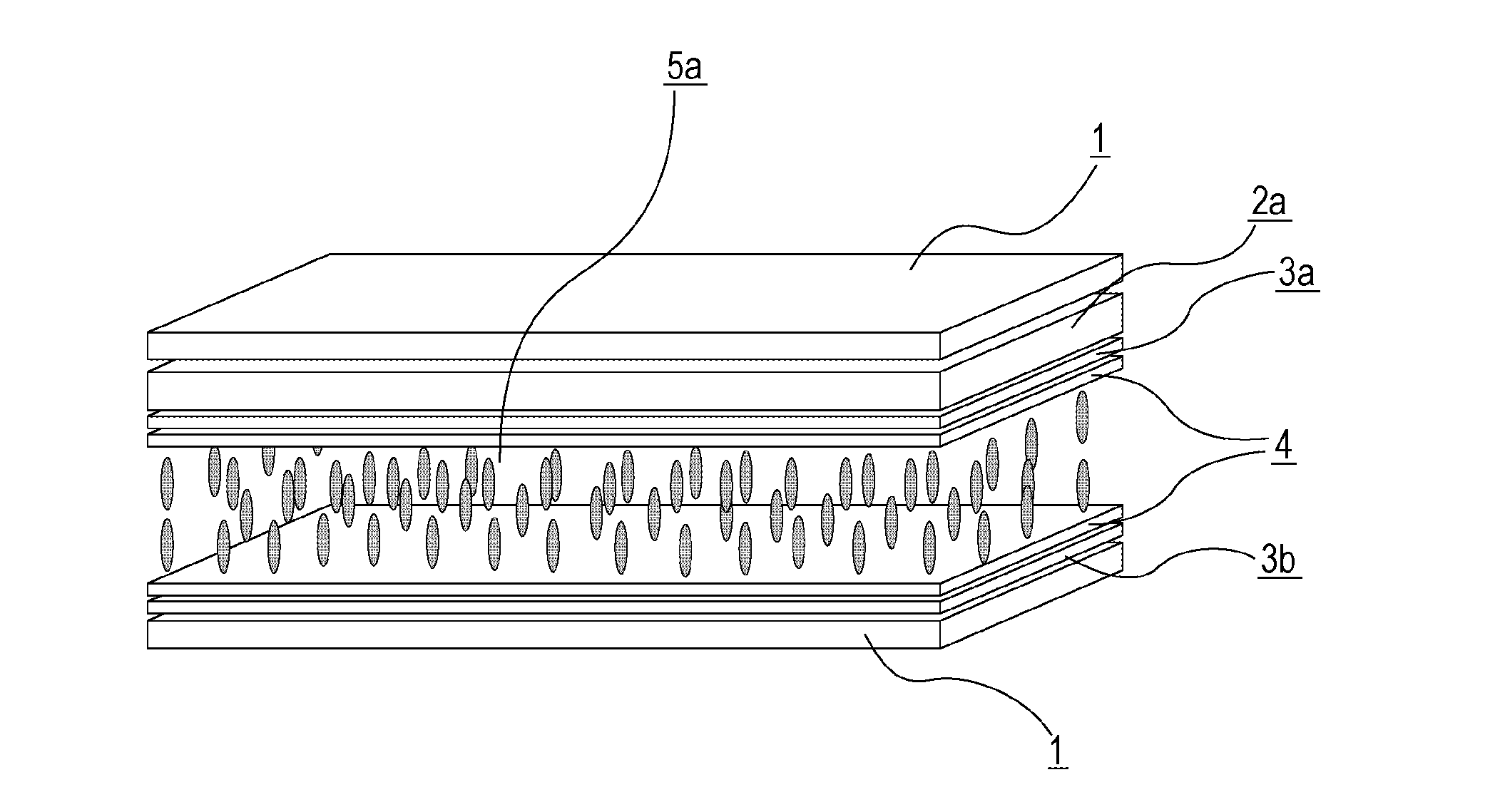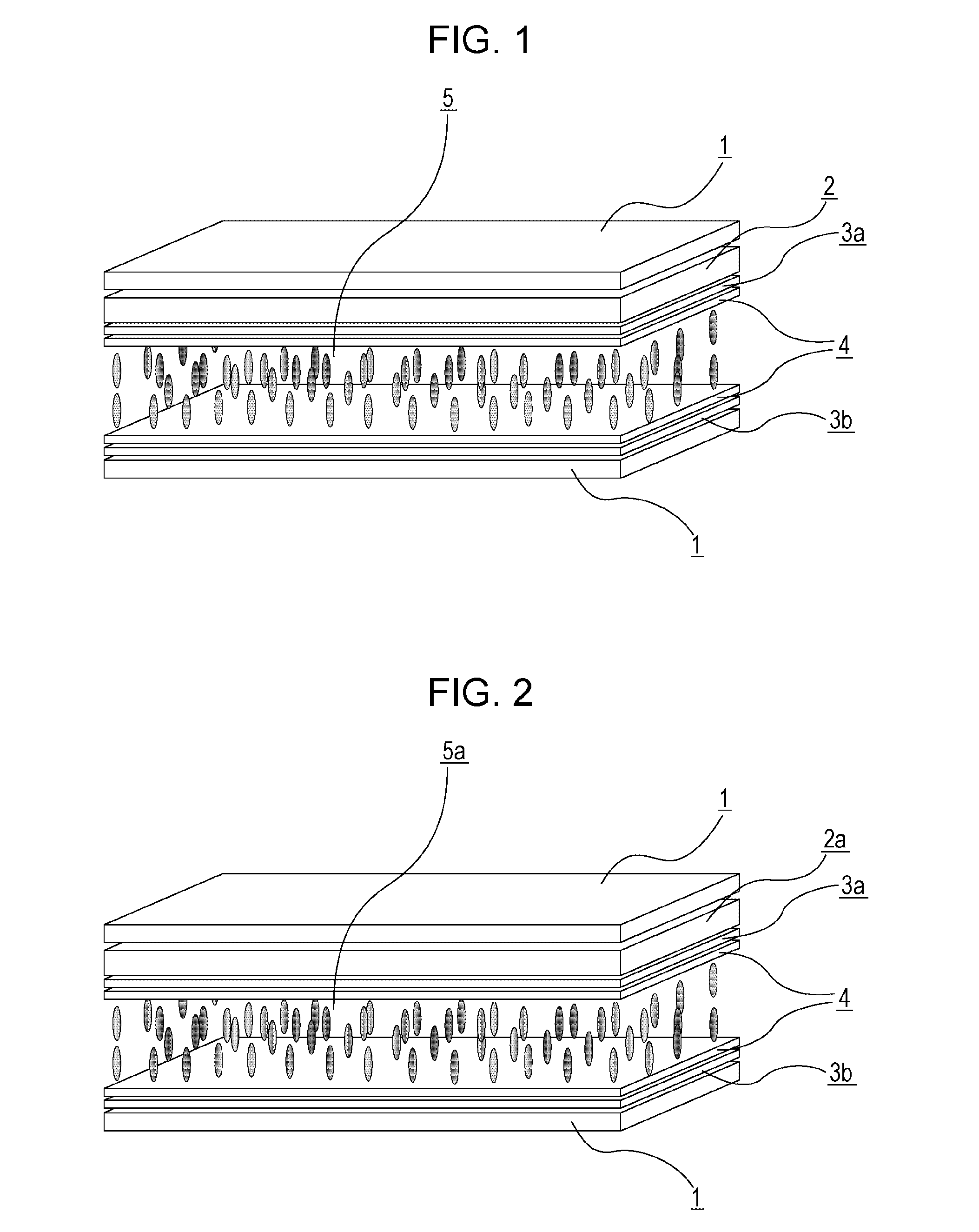Liquid crystal display device
- Summary
- Abstract
- Description
- Claims
- Application Information
AI Technical Summary
Benefits of technology
Problems solved by technology
Method used
Image
Examples
synthesis example 1
Synthesis of Copolymer a
[0202]In a nitrogen flow, 100 parts of xylene was held at 80° C.; and then a mixture of 68 parts of ethyl methacrylate, 29 parts of 2-ethylhexyl methacrylate, 3 parts of thioglycolic acid, and 0.2 parts of a polymerization initiator (“PERBUTYL (registered trademark) O” [active ingredient: t-butyl peroxy-2-ethylhexanoate, manufactured by NOF CORPORATION]) was added dropwise thereto under stirring over 4 hours. After the dropping was completed, 0.5 pats of “PERBUTYL (registered trademark) O” was added thereto every 4 hours, and the resulting product was stirred at 80° C. for 12 hours. After termination of the reaction, xylene was added thereto to adjust the nonvolatile content, thereby producing a xylene solution of a copolymer a with a 50% nonvolatile content.
synthesis example 2
Synthesis of Copolymer b
[0203]In a nitrogen flow, 100 parts of xylene was held at 80° C.; and then a mixture of 66 parts of ethyl methacrylate, 28 parts of 2-ethylhexyl methacrylate, 6 parts of thioglycolic acid, and 0.3 parts of a polymerization initiator (“PERBUTYL (registered trademark) O” [active ingredient: t-butyl peroxy-2-ethylhexanoate, manufactured by NOF CORPORATION]) was added dropwise thereto under stirring over 4 hours. After the dropping was completed, 0.5 pats of “PERBUTYL (registered trademark) O” was added thereto every 4 hours, and the resulting product was stirred at 80° C. for 12 hours. After termination of the reaction, a proper amount of xylene was added thereto to adjust the nonvolatile content, thereby producing a xylene solution of a copolymer b with a 50% nonvolatile content.
synthesis example 3
Synthesis of Polymer P
[0204]Into a flask equipped with a stirrer, a reflux condenser, a nitrogen inlet, and a thermometer, a mixture of 54.5 parts of xylene, 19.0 parts of the copolymer a obtained in Synthesis Example 2, 38.0 parts of the copolymer b, and 7.5 parts of a 15% aqueous solution of polyallylamine (“PAA-05” manufactured by NITTO BOSEKI CO., LTD., number average molecular weight of approximately 5,000) was put and then stirred at 140° C. under a nitrogen flow in order to perform a reaction at 140° C. for 8 hours while water was distilled off with a separator and the xylene was returned to the reaction solution.
[0205]After termination of the reaction, a proper amount of xylene was added thereto to adjust the nonvolatile content, thereby producing a polymer P as a modified polyamine having a 40% nonvolatile content. The resin has a weight average molecular weight of 11000 and an amine value of 16.0 mg KOH / g.
PUM
| Property | Measurement | Unit |
|---|---|---|
| Temperature | aaaaa | aaaaa |
| Temperature | aaaaa | aaaaa |
| Fraction | aaaaa | aaaaa |
Abstract
Description
Claims
Application Information
 Login to View More
Login to View More - R&D
- Intellectual Property
- Life Sciences
- Materials
- Tech Scout
- Unparalleled Data Quality
- Higher Quality Content
- 60% Fewer Hallucinations
Browse by: Latest US Patents, China's latest patents, Technical Efficacy Thesaurus, Application Domain, Technology Topic, Popular Technical Reports.
© 2025 PatSnap. All rights reserved.Legal|Privacy policy|Modern Slavery Act Transparency Statement|Sitemap|About US| Contact US: help@patsnap.com



